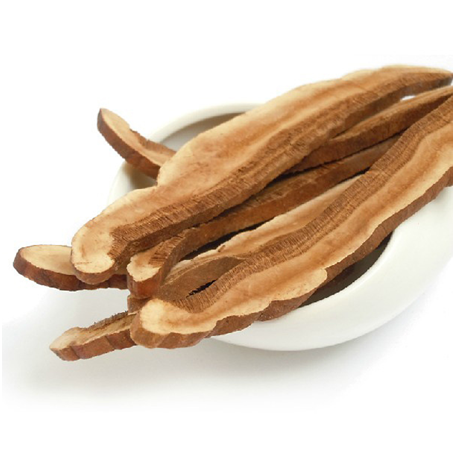Comprehensive water-saving cultivation of corn
Maize is an important grain, feed, and quaternary crop. It has the characteristics of high yield, potential for increased yield, strong adaptability, and rich nutrition. In particular, through the development of special corn production such as high-quality high-protein corn, high-starch corn, high-oil corn, and silage corn, the role and position of corn in crop production has been changed, and it has become an important link in the industry chain of planting, raising, and growing. It is of great significance to promote the optimization of the agricultural structure.
Maize is a deep-rooted crop with developed root systems and deeper soils. It has strong drought resistance and is suitable for planting in dry areas. The water production efficiency of corn is 4.3 times that of rice and 2 times that of wheat. With comprehensive drought resistance and water saving technologies, high water yield can be obtained when the water consumption reaches 400-450 mm (267 m3/mu-300 m3/mu).
First, rational fertilization, fertilizer transfer
According to local conditions, balanced fertilization will be conducted according to the characteristics of soil fertility and the characteristics of corn requiring fertilizer. Based on the combined use of nitrogen, phosphorus, and organic fertilizers, phosphorus should be increased in high-yield fields, and phosphorus should be controlled in low-yield fields. At the same time, the base farm manure and phosphate fertilizer should be as deep as possible in order to promote the growth of the underlying roots and improve the drought resistance of corn.
Second, robbing sowing, appropriate depth broadcast
The farmland with better water retention can be used for winter irrigation, and should be timely sowed on April 10th to April 15th to strive for Miaoquan Miao. Sandy farmland with poor water retention should be sown by direct winter irrigation with no-winter irrigation. The sowing date can be delayed until late April. At the same time, the sowing depth of single maize species is deeper than that of intercropping, and generally 6-7 cm is more appropriate to enhance the drought resistance of corn seedlings and create conditions for water control during seedling stage.
Third, the use of small irrigation and ridge furrow irrigation planting methods
Small irrigation and ridge furrow irrigation can reduce the irrigation quota by 20%-25%. Small irrigation is to change the Daejeon block into a small field block, and the square block is changed to a growing field. The land area of ​​the Yellow River Irrigation District is mostly about 1 mu, and the length and width of the field are not much different. It is necessary to play 3 field ridges at equal distances in the middle of each field to form a length of 25-35 meters and a width of 6 meters. m - 8 meters of paddy fields. Ridge furrow irrigation is a kind of planting method that makes the field surface form ridge and furrow, plant corn on the ridge slope, and irrigate water in the furrow. The specifications for general corn ditch construction are: ridge width 50 cm, trench bottom width 20 cm, ridge width (vertical projection of ridge slope) 20 cm, ridge height 20 cm. Ditches can be artificially built, and can also be used for rafting, ploughing, and other agricultural tools to conduct furrowing and ridging, and then artificially formed.
Fourth, farmland protection, with soil impoundment
The cultivars were timely cultivated twice in the corn seedling stage and the dialling stage to cut off the capillaries, reduce the evapotranspiration and water loss, and promote the roots under the corn roots to increase drought resistance.
Fifth, mulching, steam suppression and water conservation
Plastic film mulching can regulate soil moisture and reduce surface evaporation. The cultivation of corn under mulching can slow down the period of headwater irrigation and reduce irrigation quota. Generally, it saves irrigation volume of 50-80 cubic meters per acre and increases production by 10-15%.
Six, promote control combined with limited irrigation
A large number of studies have shown that maize seedlings have strong resistance to water stress. Appropriate water stress can play a role in seedlings and drought resistance exercise. Therefore, the water management of corn seedlings is mainly controlled, and it is generally not necessary to water. The dialect period (June 7-June 15th) should be timely watered. On the one hand, fertilizers should be top-dressed to meet the requirements of rapid corn growth, and on the other hand, there should be compensatory effects on water control during the seedling stage. Tasselling period (July 13 - July 20) Water stress will lead to serious reduction in production, should be timely irrigation. The grain filling period coincides with the rainy season. If the precipitation is normal from July 25 to August 13, no irrigation is needed. If a drought occurs, water can be supplemented once in mid-August. Ningxia Academy of Agricultural Sciences Hongsibao base point scientific and technical personnel newly farmed single-species corn in Hongsipu Irrigation District for 3 years. Through the application of limited irrigation technology, the corn yield can be achieved when the irrigation quota is controlled between 240m3 and 300m3/mu. The level of 750-800 kilograms proves that the implementation of limited irrigation in corn is an effective way to achieve both water saving and increased production.
Reishi Raw Material
Reishi Raw Material covers Reishi Slice , Reishi Extract, Reishi Mushroom and Plant Extract etc.
Organic Reishi slices are chopped from the fresh well-selected log-cultivated organic Ganoderma lucidum fruiting bodies, with high content of spores. The well-chopped slices can be directly used in making Ganoderma Tea, cooking soup and brewing wine. It's a perfect choice to keep daily health and present as a gift.

The Reishi extract is made of the fine powder, ground from the globally certified organic ganoderma lucidum, rich in the active ingredients, like dietary fibers, ganoderma polysaccharides, triterpenoid ganoderma acid and protein.
Reishi Raw Material,Nature Reishi Raw Material,Organic Reishi Raw Materials,Raw Materials Herbal Reishi
Ganoherb International Inc , https://www.ganoherb.com